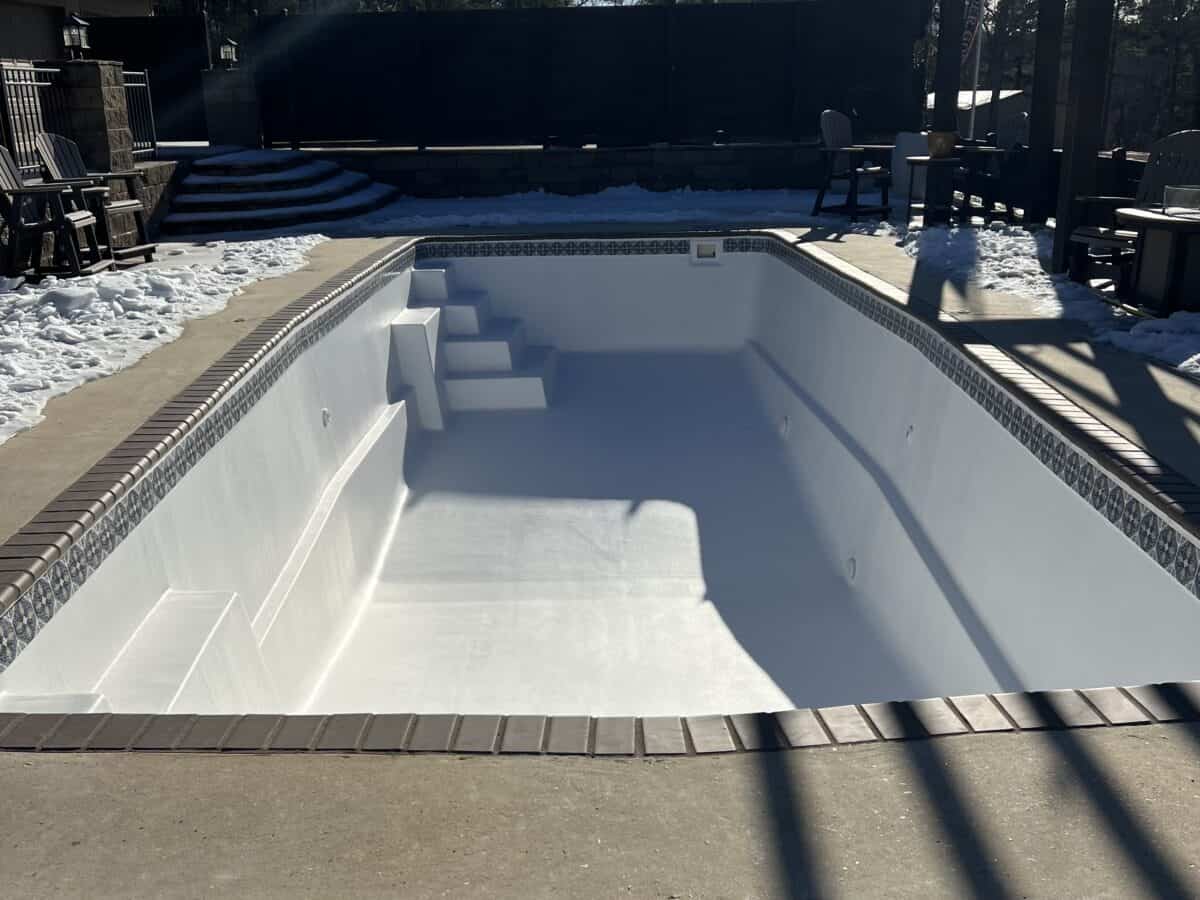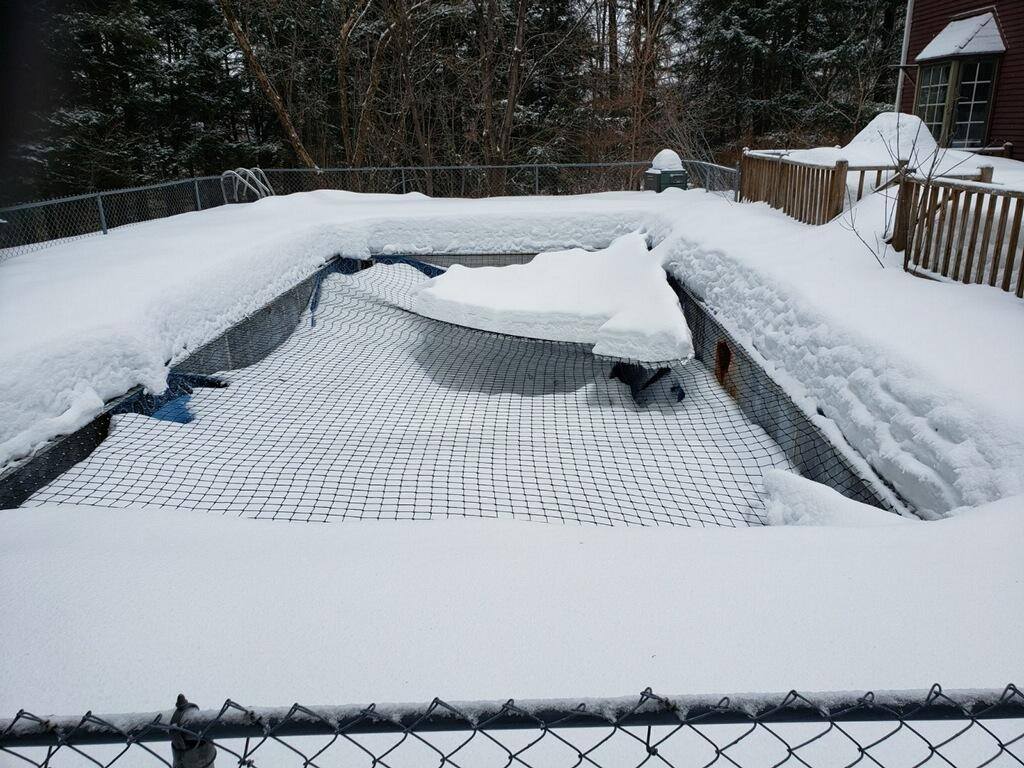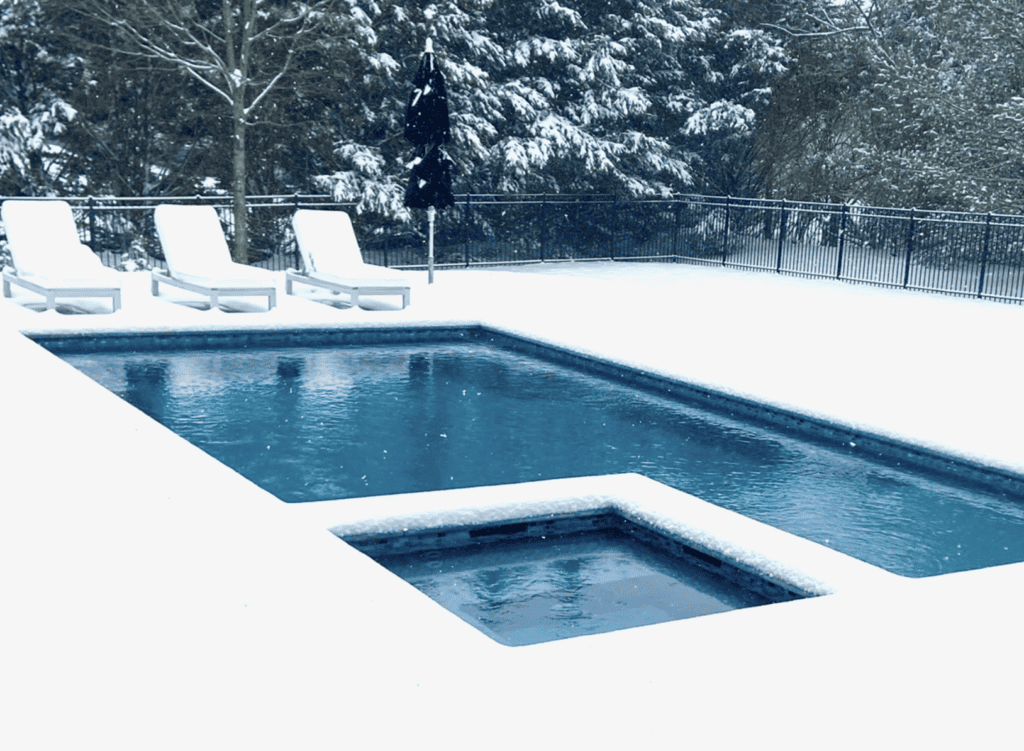Winter pool maintenance doesn’t have to be complicated, but neglecting it can lead to costly repairs come spring. Knowing how to maintain a pool in winter is the difference between a quick, easy opening and weeks of frustrating cleanup.
Fiberglass pool owners have a distinct advantage when it comes to winter care, with fewer worries about cracking, staining, or algae growth during the off-season. With these straightforward winterization steps, you’ll protect your investment and ensure your pool is ready to enjoy when warmer weather returns.
Contents
Why Cold Weather Care Matters For Your Pool

Knowing how to maintain a pool in winter prevents costly damage and extends your fiberglass pool’s lifespan. Fiberglass pools handle freezing temperatures better than concrete or vinyl, but still need protection during cold months. Without proper winterization, you risk cracked plumbing, damaged equipment, and water chemistry problems that can be expensive to fix in spring.
Preparing the Pool Before Freezing Temperatures
Start your winter pool maintenance by thoroughly cleaning and balancing water chemistry at least one week before closing. This creates a stable environment that prevents algae growth and protects your pool’s surface.
1. Clean and Remove Debris From Your Pool
Brush the walls and floor of your fiberglass pool to remove biofilm or algae that may have accumulated during the winter. Vacuum the entire pool surface to eliminate dirt and leaves that could stain your pool or clog your filter system.
2. Balance Your Pool’s Water Chemistry
Test and adjust your pool’s chemistry with these targets:
- pH level: 7.2-7.6 to protect your pool’s finish and equipment
- Alkalinity: 80-120 ppm for fiberglass pools
- Calcium hardness: 175-225 ppm to prevent surface damage
- Sanitizer: Add winter-strength chlorine or non-chlorine shock
Add a winter algaecide according to the manufacturer’s instructions, waiting 24 hours after shocking to prevent chemical interactions.
Lowering the Water Level and Draining Lines
Proper water level management prevents freeze damage to your pool’s skimmer and return lines. For fiberglass pools, maintaining some water during winter is essential to support the pool shell.
1. Determine the Correct Water Level
Lower the water level to 4-6 inches below the skimmer opening. Never drain a fiberglass pool completely, as this can cause the shell to shift or float in areas with high groundwater. The remaining water acts as a ballast to keep your pool stable throughout the winter season.
2. Blow Out Plumbing and Add Antifreeze
Use a shop vac or air compressor to blow the water out of all plumbing lines, starting with the skimmer. Add pool-grade antifreeze to any lines that cannot be completely drained. Remove drain plugs from your pump and filter system, storing them in the pump basket for easy retrieval in spring.
Key equipment to winterize:
- Pump and motor
- Filter system
- Heater
- Automatic chlorinator
- Pool cleaner
Securing the Pool Cover

A quality winter cover is your pool’s best defense against debris, algae growth, and unwanted visitors during the off-season. The right cover also makes reopening your pool much easier when warm weather returns.
1. Select the Right Pool Cover Type
Mesh safety covers allow rainwater to pass through while blocking debris and providing fall protection. Solid covers offer complete light blockage to prevent algae growth but require a cover pump to remove standing water.
Cover options for fiberglass pools:
- Mesh safety covers: Lower maintenance, better drainage
- Solid safety covers: Better algae prevention, requires water removal
- Winter cover with water bags: Budget-friendly option
2. Ensure a Tight Fit
Secure your pool cover with proper anchoring systems designed for fiberglass pools. Water bags or cover blocks work well for solid covers, while straps and springs secure mesh safety covers. A properly secured cover prevents winter damage and keeps your pool cleaner for spring opening.
Ongoing Winter Pool Maintenance Checks
Even during winter, your pool needs occasional attention to maintain proper condition. Check your pool cover at least monthly, especially after storms or heavy snowfall.
Winter maintenance checklist:
- Remove standing water from solid covers using a cover pump
- Clear debris from mesh covers to maintain proper drainage
- Monitor water levels visible through mesh covers
- Keep snow loads under 2 feet to prevent cover damage
- Check for tears or damage to the cover
A quick visual inspection can prevent small issues from becoming major problems when learning how to maintain a pool in winter.
Getting Your Pool Ready for Spring
As temperatures begin to rise, prepare to open your pool area by removing debris from the cover before removal. Carefully remove and clean your winter cover, allowing it to dry completely before storage.
Reconnect all equipment, restore proper water levels, and restart your filtration system. Test and balance water chemistry, adding shock and algaecide as needed. Run your filter continuously for 24-48 hours to clear any cloudiness.
Enjoy Stress-Free Winter Pool Ownership

Following these winter maintenance steps ensures your fiberglass pool remains in excellent condition year after year. Fiberglass pools are designed for durability, and with proper care, they’ll continue to be the centerpiece of your backyard for decades.
The smooth, non-porous surface of fiberglass pools makes them particularly well-suited for winter maintenance. Their flexibility handles freeze-thaw cycles better than concrete pools, and they resist algae growth better than vinyl liners.
When you’re ready to experience the low-maintenance benefits of fiberglass pool ownership, request a quote from Pool Brokers USA for expert guidance on selecting the perfect model for your family.
